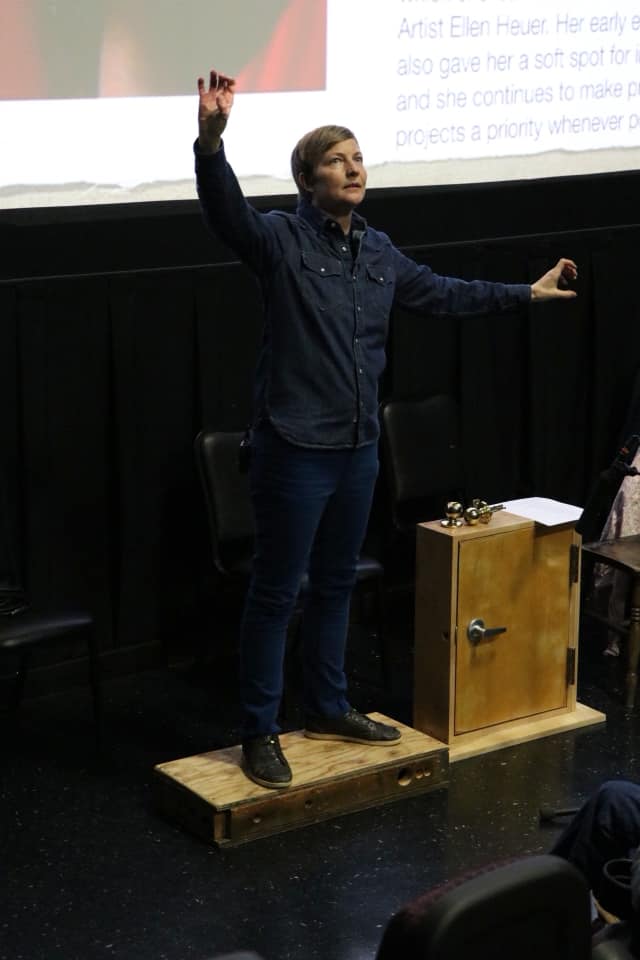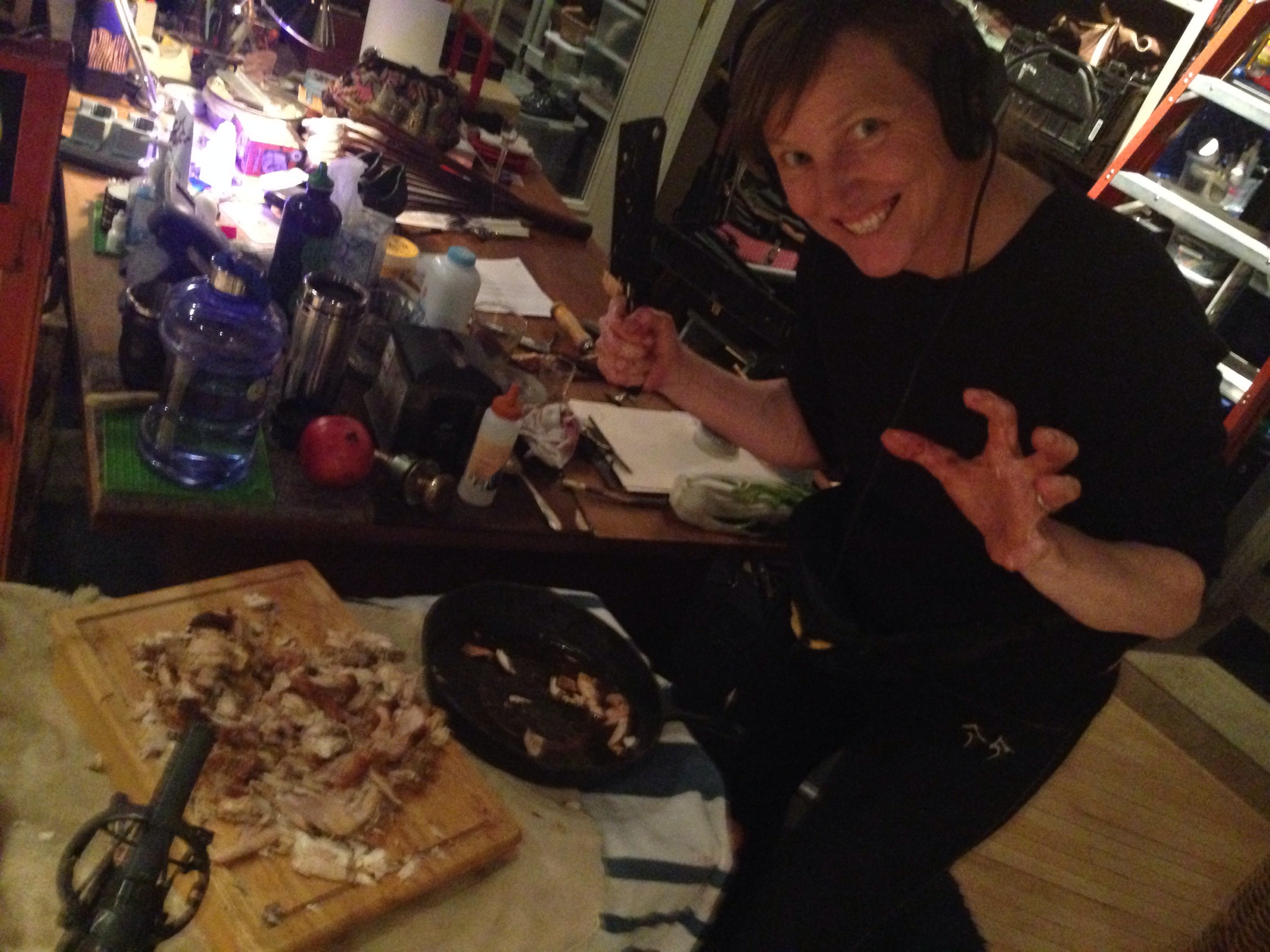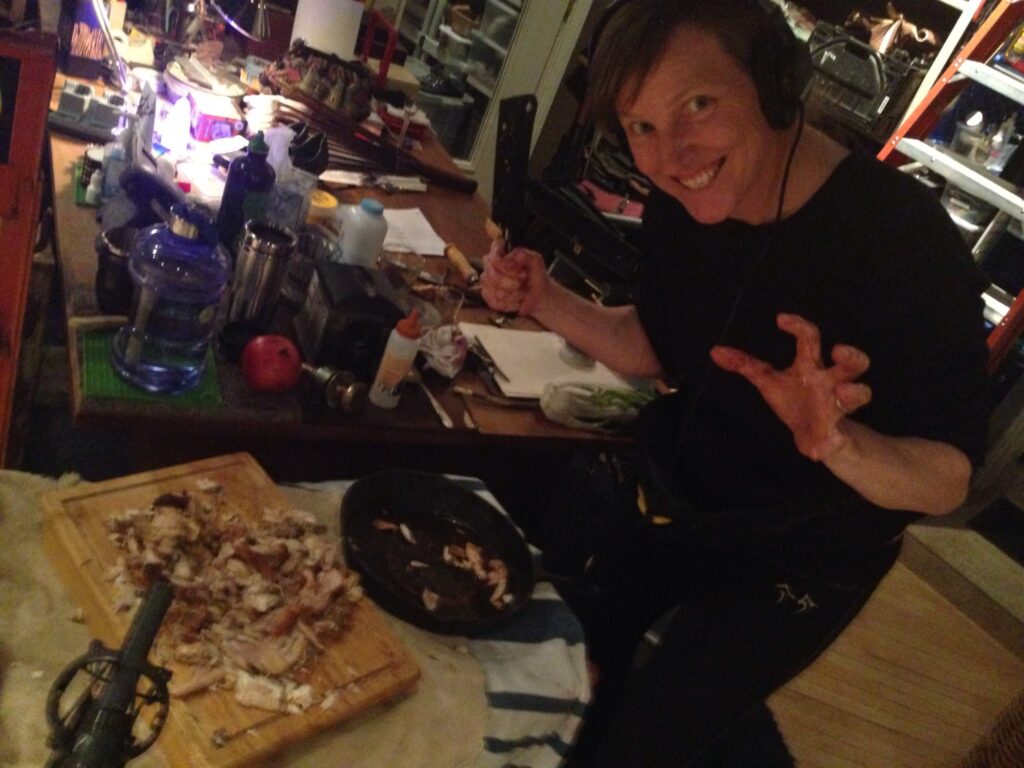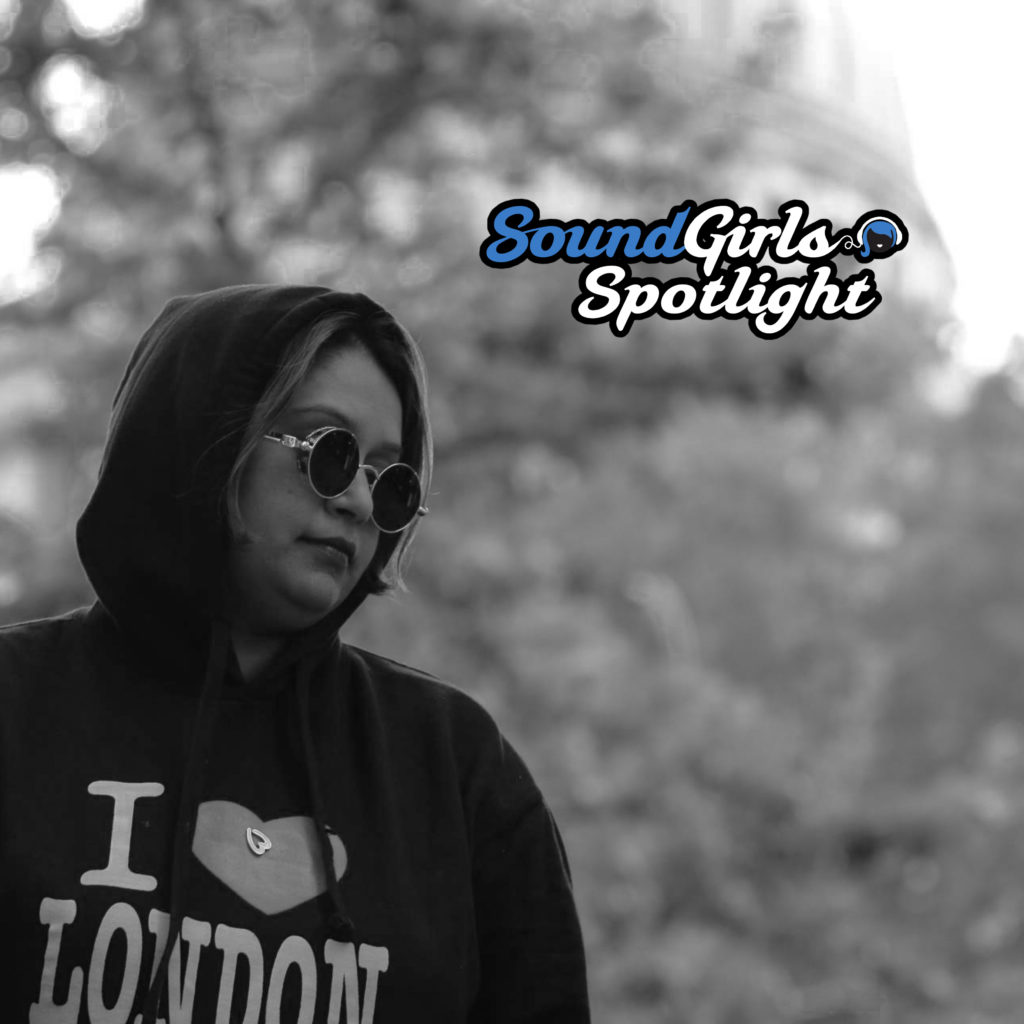Lara Dale is a New Mexico native, trained in classical music and ballet, who fell in love with choreography and began creating ballet and modern works at the University of New Mexico before moving to NYC to pursue a career as a dancer and choreographer.
Life is what happens when you are busy making other plans. Through a series of career twists and turns, she ended up in the East Village working as Administrative Assistant for the late great Howard Guttenplan, Director of the legendary Millennium Film Workshop, back in the days of Super 8 and 16MM.
 She got to see early works by Todd Haynes, Susan Seidelman, Spike Lee, Jim Jarmusch, and others, and was deeply inspired by their hard work, innovation, and independent success. She went on to pursue theater and the arts for many years, and has resided on both coasts and in Europe. She is now happily back in her home state of New Mexico.
She got to see early works by Todd Haynes, Susan Seidelman, Spike Lee, Jim Jarmusch, and others, and was deeply inspired by their hard work, innovation, and independent success. She went on to pursue theater and the arts for many years, and has resided on both coasts and in Europe. She is now happily back in her home state of New Mexico.
While searching for a job in the flourishing NM film market, she came across a Craigslist ad asking for someone with a trained dance background to become a Foley Assistant. The precise timing of classical music and the rigorous physical movements of ballet and modern became the perfect background for mastering the art of Foley, which she learned from the Academy Award-winning Foley Artist Ellen Heuer, who was ET’s footsteps among many other amazing credits.
In partnership for many years with Wildfire Studios in Los Angeles, she built an extensive Hollywood resume of both major features and important independent projects. She opened Footvox Studio in 2013 to better serve the vibrant New Mexico film community.
Her credits include Twilight: Eclipse, The Mechanic, Mildred Pierce, Drunktown’s Finest, Rosemary’s Baby – NBC, Black or White, and Expendables 1 and 3.
What is the job of a Foley mixer and a Foley artist?
As a Foley Artist, at the most basic level, I walk all the footsteps of the characters in a film, whether animated or human, while my sound engineer makes sure they are recorded correctly. It’s actually way more complicated than that, so I will use Toy Story as an example since so many features today are animated or have animated effects.
Cartoons don’t make any noise. The filmmakers have to bring all the actors into the sound studio to record them reading the script, then the studio animates to those vocal tracks. Once the animation reaches final edit, some of the greatest Foley Artists in the business, including Jana Vance and John Roesch, have to invent from scratch all the physically generated noises of each of the characters.
They meticulously invent sounds like Buzz Lightyear’s wings unfolding, or the footsteps of Woody walking along the wooden bedroom floor. Every single toy has to have a distinct sonic footprint, both literally and figuratively. This can literally be hundreds of tracks, and thousands of cues.
What is Foley responsible for covering in a film or tv show?
We do all the human or character-generated noises in a film – walking, running, eating, brushing hair, brushing teeth, punching, kicking, even kissing noises since the room mic doesn’t pick that up. What we don’t do is sound effects such as explosions, car crashes, trains, planes, factory sounds, etc.
If you want to hear a brilliant example of Foley and sound effects, seamlessly mixed to seem like the hundreds of tracks are the real sounds, watch the chase scene in Toy Story when Woody is trying to catch up to the moving van. That is true Post Production sound at its finest. And there are a number of really good videos online now if you use the search term “Foley Artist.”
A talk Laura gave about her work
Can you describe the workflow of a Foley project? What elements do you cover?
When I tell people that I worked on major projects like Twilight: Eclipse and Expendables 1 and 3, I often get asked if I got to meet any of the actors. I patiently explain that post means post and that some films can take a year or more to edit, so Post Sound teams are generally getting the project long after the sets have been torn down and the actors are on to other films.
Picture Lock is a technical term, meaning what we get is what audiences will actually see on the big screen. Once the final edit has been approved, we are part of three sonic stems. The first stem is Composing or Soundtrack, the second stem is Foley (human-generated sounds), and the third stem is Sound Effects (non-human-generated sounds) – not necessarily in that order.
Most beginning filmmakers think music is all they need for Post Sound until they do a horror film and realize music doesn’t create the heart-wrenching bloodiness of someone being stabbed or having their eyes gouged out. Then they hear the boom mic sound and realize most of that is unusable. It used to be that 50-60% of the on-set sound was wiped and re-recorded. Nowadays with all the green screen and visual effects, the post teams pretty much wipe the entire original soundtrack and then meticulously rebuild it from scratch.
The shiver you get in horror is a lot about Foley, with lots of layered sounds and very messy props, what with stabbing or hacking watermelons for bodies being dismembered, or wrenching celery to do a neck being broken, or biting through a Pomegranate as I did in NBC’s Rosemary’s Baby, to simulate the sound of Rosemary eating a human heart in one of the creepier scenes.
One of the major components of Foley recording is footsteps. How many types of shoes do have for work? How many different surfaces are there at the studio?
 If you work long enough on diverse projects you will eventually need to have every type of shoe, or at least the sound of that shoe, that you possibly can. I have about three hundred pairs of shoes, both male and female – everything from 1940s orthopedic women’s heels that sound like really great stilettos, to men’s Italian leather loafers that sound like Fred Astaire style ballroom dancing shoes.
If you work long enough on diverse projects you will eventually need to have every type of shoe, or at least the sound of that shoe, that you possibly can. I have about three hundred pairs of shoes, both male and female – everything from 1940s orthopedic women’s heels that sound like really great stilettos, to men’s Italian leather loafers that sound like Fred Astaire style ballroom dancing shoes.
My best shoes I have whittled down over the years and they are the ones reserved only for leading characters. I tend to name them after old Hollywood stars, so I have Greta Garbo, Marilyn Monroe and Betty Davis as my favorite leading lady shoes, and Clark Gable, Cary Grant and Jimmy Stewart as my favorite leading men.
As far as surfaces, next time you watch a major movie, pay attention to how many surfaces all the characters are walking on. Everything from mud to dirt to concrete to wood to carpet to linoleum to tile to marble – filmmakers shoot anywhere and everywhere, including outer space, so you have to have floor surfaces that can stand in sonically for whatever that location requires.
I have about thirty to forty floor surfaces I can create. Some of them I walk as is, and some of them I layer to get different types of sounds, such as making a wood floor creakier for a scary scene by layering another creaky floor surface on top or making concrete more gritty for an urban crime setting by adding fine dirt and broken glass. It’s all about the layers and about how well you know the particular complexities of each surface you are working with.
What are the challenges of doing different types of footsteps especially when the character is much larger or smaller than you are (and you naturally don’t sound like them)?
Learning to walk Foley correctly for your skills and body type is the hardest part, especially since you have to get in a heel-toe, heel-toe sound, and most people tend to flatfoot it when they are first learning, which makes it sound like Frankenstein or a weird stalker.
The shoe choice is critical in the sense that the expectation of an audience is that a high heel sounds a certain way, and when you don’t produce that, it pulls them out of reality and into a place where now they are concentrating on the sounds and not the character. Gathering all your types of shoes and mastering how to walk in them can take many films and many years, and I personally didn’t come into my stride, so to speak, until about the third year or so.
Do you ever work on headphones or just listening to what’s happening in the room?
Some Foley Artists swear by headphones while others feel it compromises your ability to accurately hear what you are doing. I personally like headphones because I feel like I hear the nuances of the performance better, but I highly recommend using wireless because the cord can really get in the way when you are trying to bust through a lot of sound cues and you keep tripping or getting tangled up in the cord.
What are you listening for? How is it different from everyday listening? Or are you thinking more about performance?
The old cliché in Foley is that you are only a good Foley Artist if the audience doesn’t notice your work. If they are completely immersed in the film and the sound seems so real they don’t even pay attention to it, then our sound team is doing their job. If anything in the sound starts to stand out, then it is either poorly performed or a bad sound mix and we are not doing our jobs.
Consequently, though there are lots of tricks and techniques you learn or discover, the most subtle and real-sounding performance is always the best. When I am walking a character, I try to get my bearings as far as how many steps they have in that segment, what surface they are on, and what shoe they are wearing. Then I try to let go and just concentrate on the emotions they are conveying, particularly if it is a strong negative emotion such as sadness or anger which deeply informs the tone of the scene. If I am doing the mother of a dying cancer patient and I make her sound too cheerful or upbeat, I’m cutting into the work of that actor and undermining their performance. Your biggest job in Foley is to enhance and support the performance of each actor without any of your hard work ever being noticed.
Since the Foley artist is typically responsible for moving the mic while working, have you learned mic placement by watching other walkers or from Foley mixers instructing you? Was there a learning curve to learning mic placement?
Mic placement is definitely learned, but it is also about having a good ear. Your sound engineer may also request specific mic placements in order to create recording effects such as larger or smaller resonant spaces so they will not have to pull them from a sound effects library later.
I’ve definitely learned how to listen over the years and will say that generally for me a mic at about 18 inches away, at a somewhat low 45-degree angle is best for most of my footsteps. That of course can change from studio to studio but is what works best in my own space. I will say that the industry standard for mics can vary but the good studios use the finest mics regardless of cost, and the most commonly cited brands are Sennheiser and Neumann.
Props are a whole other challenge as you may be doing a dining scene and need to raise the mic up and over the props table if you are working on picking up silverware and plates for example. Certain props are much louder like paper, ceramics, or metal, so you have to either perform more subtly or move your mic back slightly from the noisy prop. With an experienced engineer, you can always run it by their trained ear if you aren’t sure about the sound you are producing. It’s kind of a sonic dance between the Foley Artist and the Sound Engineer when you are working out all the sound cues.
How has your background as a dancer helped you as a Foley artist?
Though Foley has its roots in radio, the earliest commonly heard Foley for major studios was tapping sounds for dance numbers. Uncredited day players with dance training were brought into the sound studio to overdub the rhythms of the tap shoes in any given dance number.
The most famous dance routines you hear with old Hollywood stars were not the actual recordings of the dancer’s performance, but post-production overdubs with contract day players. One exception was Fred Astaire, whose Foley was performed by his choreographer, Hermes Pan, because he knew the dance routines inside and out.
One of the only stars to do his own Foley was Gene Kelly. A notorious perfectionist, he would go into the studio after picture lock and record his own dance routines, so “Singin’ in the Rain” is one of the rare instances where you are hearing the artist’s own performance, re-recorded in a professional sound facility.
The precision, strength, and timing a dancer acquires through rigorous training is priceless when it comes to Foley, so I strongly recommend dance and/or music training as a prerequisite. Even some experience in martial arts can be beneficial, as you will know how to listen with your body and repeat precise sonic performances over and over again when necessary.
How did Footvox come about?
I originally answered an ad on Craigslist for the acclaimed Foley Artist Ellen Heuer, who was from Los Angeles and did ETs footsteps and Dirty Dancing, as well as hundreds more great films. She was looking for an assistant for a studio she was opening in Corrales, in order to take advantage of the New Mexico film incentives. I ended up apprenticing under her for about three years until she moved back to Los Angeles and I inherited the props from her studio.
I got to watch a master at work and did do some footsteps and prop noises for crowd scenes, but most often I was feeding cues, buying new props, and cleaning up the studio afterward. It wasn’t until Ellen moved back to L.A. that I really began to learn the serious work of walking for the major Hollywood stars. My engineer helped a lot, as he had seen so many sessions by that point that he could coach me when I had cues that I didn’t know how to execute. But I am proud to say that I did a lot of learning on my own, just experimenting and working things out by ear.
For someone interested in becoming a Foley artist, what personal strengths, skills, etc are beneficial or needed for the job?
A movement background of some sort is essential – either dance or martial arts or tai chi – anything that requires you to be in total command of your physical body. Dance is really the best foundation because timing is everything in Foley and dancers are masters at watching someone move and then duplicating it exactly.
How do you get a foot in the door or what’s the best way to get started?
Foley is handed down from artist to artist and there really aren’t that many of us in the industry compared to how many actors, editors or directors there are. My lineage through Ellen actually goes back all the way to Jack Foley, which kind of amazes me.
I would say that finding a good sound engineer who has worked on Foley and asking if you can sit in when they have a session would be a good place to start. Also, asking around in your community and seeing if there is a Foley artist who needs an assistant for bigger projects. In my case, I would never have known about this profession if I hadn’t seen an ad in Craigslist and had the curiosity and determination to learn about it from the ground up.
How much of your work comes from projects in New Mexico?
I would say that a lot of my independent work comes from connections I have to local filmmakers in Albuquerque and Santa Fe, and all of the features come from connections my engineer has out in Hollywood.
Could you give us a couple of Foley hacks? What sounds do you make in a way that probably aren’t how most people would guess you do it?
Wet chamois is your best friend when it comes to dripping blood and gore kinds of noises, and in the Rosemary’s Baby remake for television, I used a grilled chicken to make the hacking sounds for a particular flashback scene where the ancient witches that are haunting the building are seen hacking a body to pieces in a human sacrifice ritual.
What’s your favorite part of being a Foley artist?
Everything, but most of all I love turning a promising film into a good film just by being able to do precise sonic choices that enhance what already exists or creates a new atmosphere that didn’t exist in the original tracks. My slogan is “Foley Makes a Bad Film Better and a Good Film Great!”
What’s your least favorite part?
I guess studio clean-up, but even that is very satisfying to me. After Rosemary’s Baby I cleaned up meticulously, as I do after every session, but I was finding chicken bits for weeks afterward in the strangest places as I had hacked so hard it had splattered everywhere.
Check out our interview with Lara on The SoundGirls Podcast
Find More Profiles on The Five Percent
Profiles of Women in Audio





